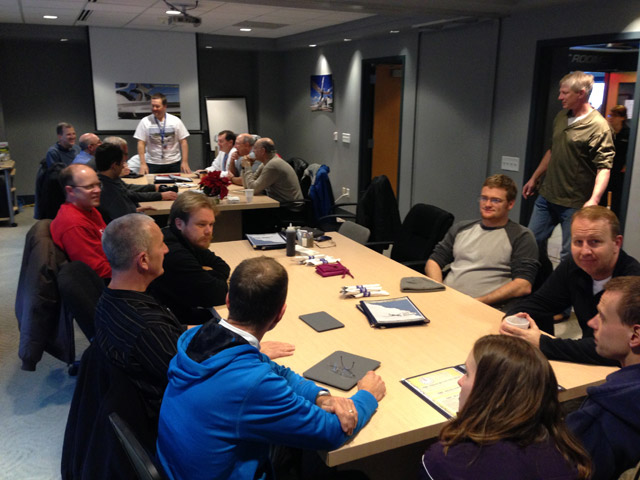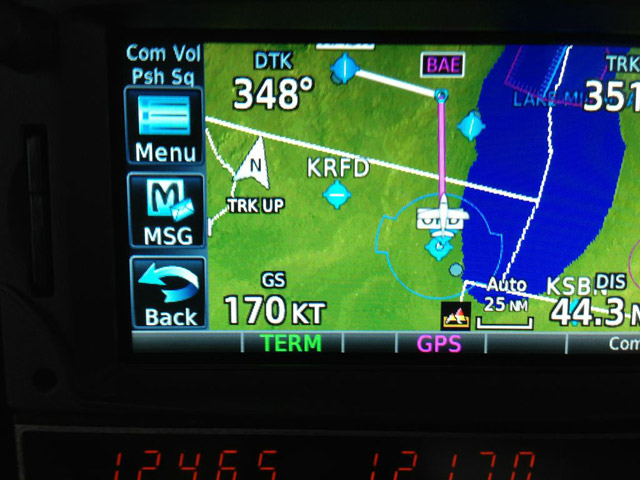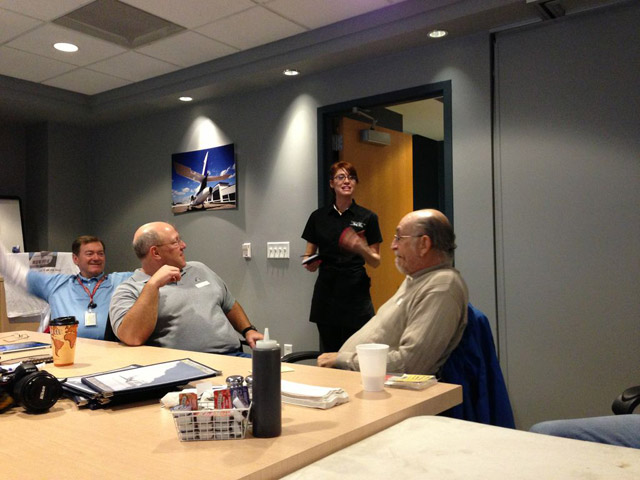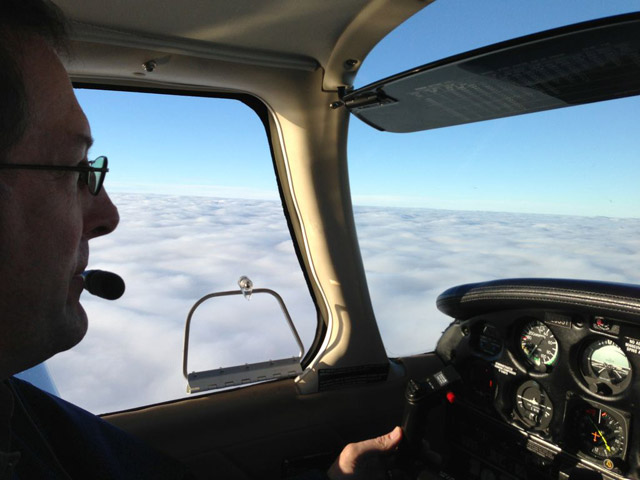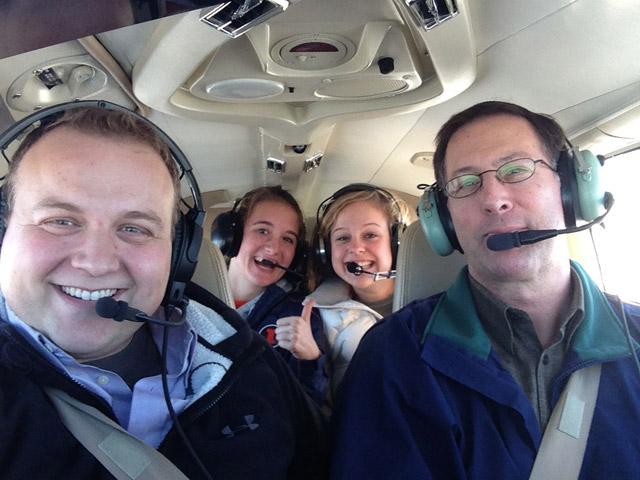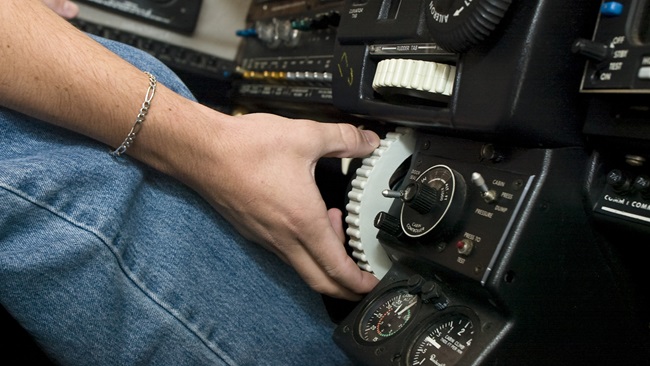Event Spotlight
Breakfast Fly-Out Leads to Unexpected Connections and Practical Planning Tips
What do you do when your scheduled fly out has weather problems? You change the location, use the opportunity as an IMC training lesson, and learn a few things on how to make the next fly out even more successful.
That’s what members of the Leading Edge Flying Club based at Chicago Executive Airport (KPWK) did last month when IMC conditions put a damper on its scheduled breakfast fly out to Janesville, Wisconsin (KJVL), where they planned to meet up with members from three Wisconsin-based flying clubs – the Winnebago Flying Club from Oshkosh (KOSH), the Cap City Flyers from Madison (KMSN) and the Baraboo Flying Club (KDLL).
“We called ahead to the Janesville restaurant and they were looking forward to having us and then the weather kind of crapped out,” Leading Edge Board Member Al Waterloo said. “The Baraboo club canceled, I think all the planes at Winnebago were down for maintenance, and the Cap City flying club didn’t want to go flying in low IFR weather.”
The Cap City Flyers suggested rescheduling, but “we thought, ‘Hey, Madison has a good restaurant, so why don’t we just go up to you?’” Al said.
Three airplanes made the trip – the club’s Piper Dakota, a member-owned Cessna 310 and a rented Diamond DA-40, each with proficient instrument-rated pilots. Al, who is a CFII, flew the club plane with a friend who is IFR-rated and wanted to brush up on his skills. “He’s an IFR pilot and we’ve done a bunch of lessons, but it’s always been VFR under the hood,” Al said. “This was the first time he was in the clouds. He got a free lesson out of it.”
In Madison, Cap City Flyers President Colin Maitland coordinated with Wisconsin Aviation to use its conference room and with Pat O’Malley’s Jet Room, the on-field restaurant, to have private wait staff come over and serve the group of about 20 in the FBO.
“Immediately it was an instant connection. And it wasn’t just a connection between the clubs, but it was a connection with all the other businesses on the airport,” Al said. “The owner of Wisconsin Aviation came in to say hello, some of the line guys were helping us get extra tables and chairs for the event, they thought it was great. We ended up buying some fuel from them. The owner of the restaurant came in, he felt tickled to death that we’d want to fly such a huge group in and have breakfast and eat his food.
“You saw the power of flying clubs, not just necessarily interacting club to club, but club to other businesses on the airport and how receptive they were and how much of a force you are when you collectively do something at once. It ends up being a lot of people, a lot of airplanes, a lot of mouths to feed. Everybody really likes it.”
Planning Lessons Learned
Planning the fly out was quite simple. “It was a matter of a few emails and ‘bam’ we had a great time,” Al said. He suggested just throwing a date out there and commit to it, rather than asking what dates work for people. “If people can make it, great. If they can’t, there will be another time. It’s not like this is a one-time shot,” Al said. He also recommends booking the club planes before advertising to the other clubs or to your own club members so you have them available.
Once Al put the word out, club members were asked to RSVP. “I told everybody it’s first come, first served. I was keeping track to make sure we didn’t have more people sign up than we had seats available.”
On the morning of the fly out, members could choose which aircraft they wanted to fly in and if they wanted to switch aircraft coming home that was fine. The informal seating assignments worked for this fly out, but other clubs might want to be a little more hands on in making sure everyone not only has a seat, but those who want to get some stick time have that opportunity.
Al plans to develop a spreadsheet to keep track of how many people are going, as well as the number of passengers and useful load for each aircraft, and who can fly what aircraft type, and how to divide the fees afterwards.
Perhaps the most important aspect of planning the fly out within the club is setting the expectation beforehand that everyone shares the cost, whether you are at the controls or a passenger.
“When we do these things, even if you don’t manipulate the controls, if you sit in the back, you’re still expected to pay. You have to divide it equally,” Al said. “We just took the total Hobbs time and divided by the number of people in the airplane. Nobody had a problem with that, even the people that didn’t fly.”
The tricky part is fairly compensating pilots who fly their own aircraft. Al recommends owners come up with an hourly rate for their aircraft taking into account not just fuel, but maintenance costs. He wouldn’t include fixed costs like hangar or tie down fees or insurance, which wouldn’t be part of the hourly cost for a club aircraft. Have the hourly figure calculated before the trip so people know what to expect ahead of time and you don’t have to spend time doing calculations afterwards.
Although the weather prevented all four clubs from getting together in December, members of both clubs laid a great foundation to expand upon. “We really want to get the Winnebago Club together and the Baraboo club as well,” Al said. “We have another Fly Out date, January 26, the last Saturday in January. We’re all going to meet up—just have a good time, fly airplanes and hang around, and give people a reason to fly and do something fun.”
